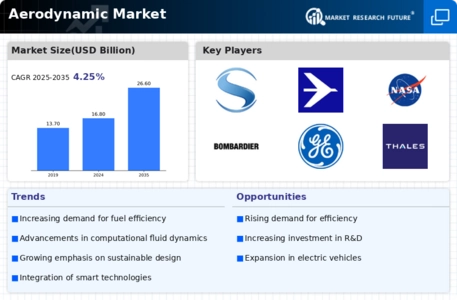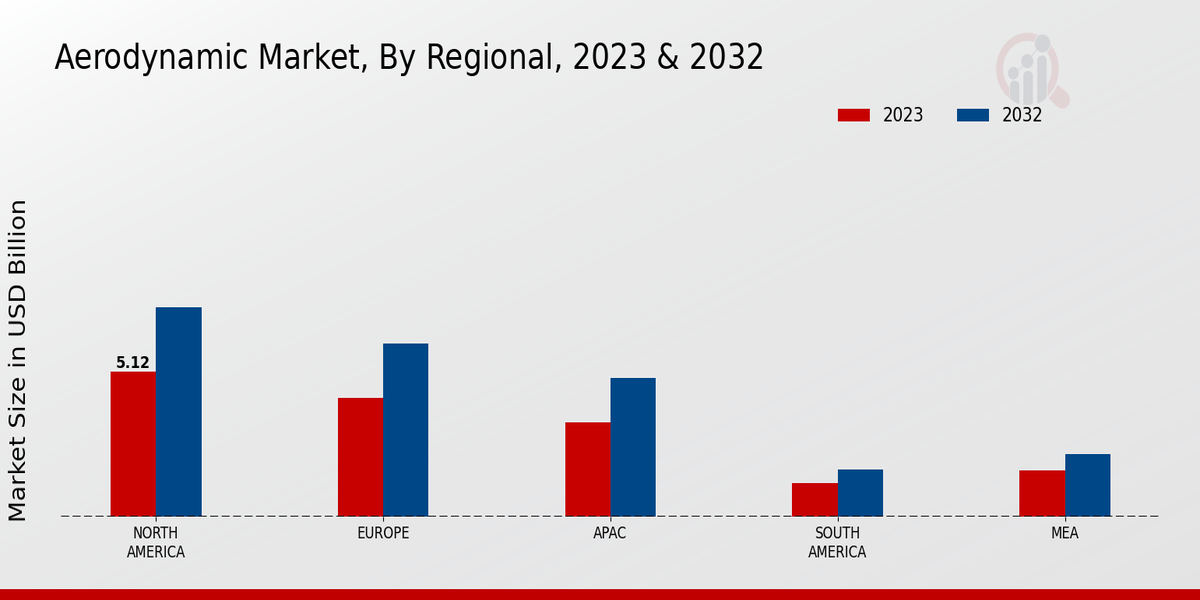Market Growth Projections
The Global Aerodynamic Market Industry is projected to experience substantial growth in the coming years. With a market value of 16.8 USD Billion in 2024, it is anticipated to reach 26.6 USD Billion by 2035, reflecting a compound annual growth rate of 4.25 percent from 2025 to 2035. This growth is driven by various factors, including advancements in technology, increasing demand for fuel efficiency, and regulatory pressures. The market's expansion is indicative of the critical role that aerodynamics plays across multiple industries, including automotive and aerospace.
Growing Demand for Fuel Efficiency
The Global Aerodynamic Market Industry is experiencing a surge in demand for fuel-efficient solutions across various sectors, particularly in automotive and aerospace. As fuel prices remain volatile, manufacturers are increasingly focusing on aerodynamic designs to enhance vehicle performance and reduce fuel consumption. For instance, vehicles with optimized aerodynamics can achieve up to 20 percent better fuel efficiency. This trend is projected to drive the market value to approximately 16.8 USD Billion in 2024, as companies invest in research and development to create innovative aerodynamic technologies.
Rising Interest in Electric Vehicles
The shift towards electric vehicles (EVs) is significantly impacting the Global Aerodynamic Market Industry. As EV manufacturers strive to maximize range and efficiency, aerodynamic design becomes a critical factor. For example, Tesla's Model S features a drag coefficient of just 0.24, showcasing how effective aerodynamics can enhance vehicle performance. This growing interest in EVs is likely to drive demand for aerodynamic solutions, as manufacturers seek to optimize their designs for better energy efficiency. Consequently, the market is poised for growth as more companies recognize the importance of aerodynamics in the EV sector.
Advancements in Aerodynamic Technologies
Technological advancements are playing a crucial role in shaping the Global Aerodynamic Market Industry. Innovations such as computational fluid dynamics and wind tunnel testing are enabling engineers to design more efficient aerodynamic shapes. These technologies not only improve performance but also contribute to safety and stability in vehicles. For example, the integration of advanced simulation tools has led to the development of lighter and more aerodynamic aircraft, which can reduce fuel consumption significantly. As these technologies evolve, the market is expected to grow steadily, with a projected value of 26.6 USD Billion by 2035.
Increased Investment in Aerospace Sector
The aerospace sector is witnessing increased investment, which is positively influencing the Global Aerodynamic Market Industry. With a rising number of air travel passengers and the need for more fuel-efficient aircraft, manufacturers are focusing on aerodynamic innovations. For instance, the development of next-generation aircraft, such as the Boeing 787, emphasizes lightweight materials and streamlined designs to enhance fuel efficiency. This trend is expected to propel the market forward, as the aerospace industry continues to prioritize aerodynamic advancements to meet growing demand and regulatory requirements.
Regulatory Pressure for Emission Reductions
The Global Aerodynamic Market Industry is increasingly influenced by stringent regulations aimed at reducing emissions and enhancing environmental sustainability. Governments worldwide are implementing policies that require manufacturers to adopt aerodynamic designs that minimize drag and improve fuel efficiency. For instance, the European Union has set ambitious targets for reducing carbon emissions from vehicles, prompting automakers to invest in aerodynamic improvements. This regulatory pressure is likely to accelerate the adoption of aerodynamic technologies, contributing to a compound annual growth rate of 4.25 percent from 2025 to 2035.

























Leave a Comment